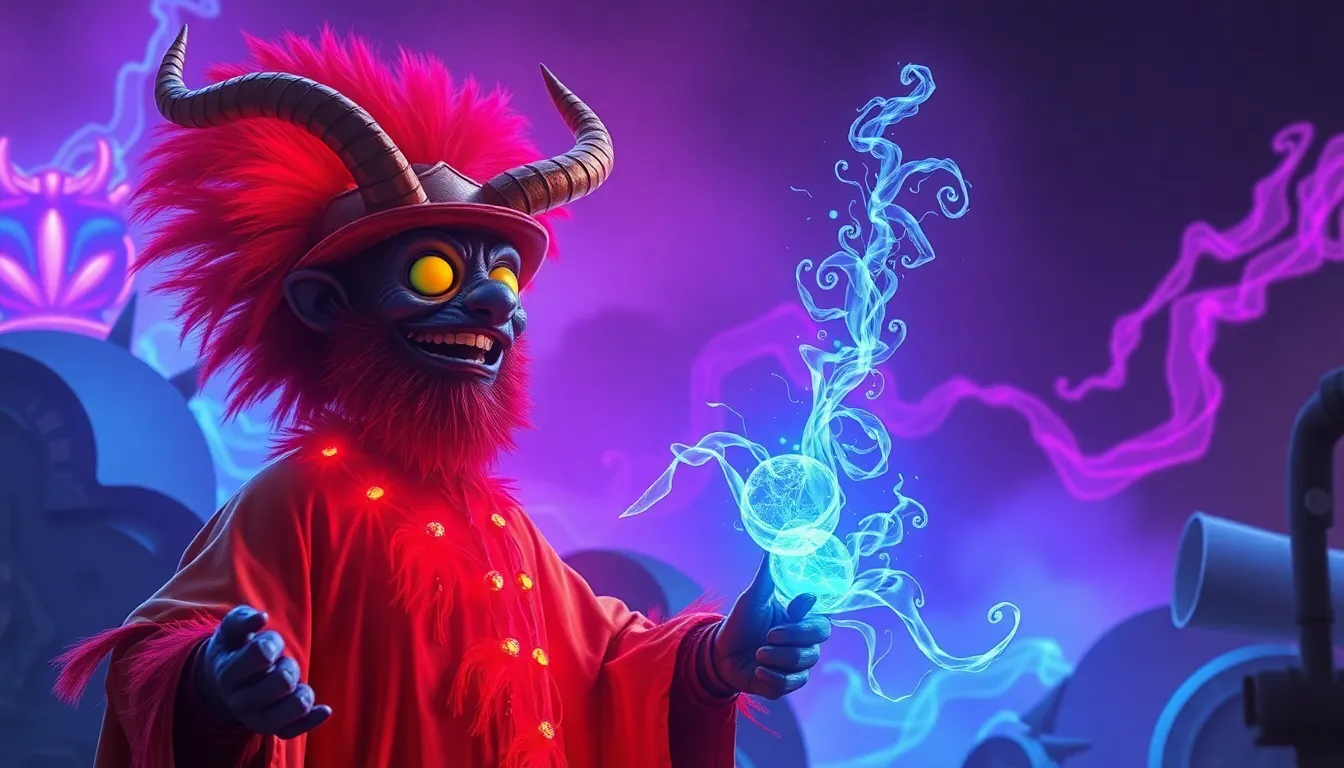The Enduring Legacy of Trickster Myths in Pop Culture
Introduction to Trickster Myths
Trickster myths are a fascinating aspect of folklore found across various cultures, defined by their central figures—tricksters—who embody a blend of cunning, mischief, and subversion. These characters often challenge societal norms and expectations, using their wit and intelligence to navigate the world around them. They are known for their ability to shape-shift, play pranks, and provoke thought, often leading to profound commentary on the human condition.
The origins of trickster figures can be traced back to numerous cultural traditions, including:
- Native American: Characters like Coyote and Raven embody the trickster spirit, often teaching lessons through their antics.
- African: Anansi the spider serves as a well-known trickster, weaving tales that impart wisdom and moral guidance.
- European: Figures such as Loki from Norse mythology disrupt the order of the gods and humans alike.
The Role of the Trickster in Folklore and Mythology
The trickster plays a multifaceted role in traditional stories, serving as both a hero and a villain, a teacher and a fool. Tricksters often challenge authority, expose hypocrisy, and provide commentary on the human experience. They are central to narratives that explore themes of justice, morality, and the complexities of life.
Some well-known trickster figures include:
- Anansi: The West African spider god known for his cleverness and storytelling.
- Coyote: A key figure in many Native American myths, often embodying both wisdom and folly.
- Loki: The Norse god whose mischief and manipulation lead to significant consequences for gods and mortals.
The Psychological Significance of Trickster Archetypes
Carl Jung identified the trickster as one of the essential archetypes within the human psyche. This archetype represents the duality of human nature—the ability to create and destroy, to uphold societal norms while also subverting them. Tricksters mirror our own struggles with identity and societal expectations, revealing the complexities of our motivations and desires.
Tricksters often reflect:
- Human nature’s inherent contradictions.
- The capacity for change and adaptation.
- The challenge of conforming to societal norms.
Tricksters in Literature: From Ancient Texts to Modern Novels
Throughout history, trickster characters have appeared in classic literature, often serving pivotal roles in their narratives. In Homer’s “The Odyssey,” Odysseus embodies the trickster with his cunning strategies to escape peril. Similarly, in Geoffrey Chaucer’s “The Canterbury Tales,” the Miller’s Tale features a character that uses deception for both humor and moral lessons.
In contemporary literature, trickster themes persist:
- “Americanah” by Chimamanda Ngozi Adichie: The protagonist navigates identity and cultural perceptions with wit and insight.
- “The Brief Wondrous Life of Oscar Wao” by Junot Díaz: The narrative is laced with elements of the trickster as it explores heritage and storytelling.
Trickster Themes in Film and Television
In modern cinema and television, trickster archetypes continue to thrive. Characters such as the Joker from “Batman” and Deadpool from their respective franchises exemplify the chaotic and unpredictable nature of the trickster. Their actions often blur the lines between heroism and villainy, challenging viewers’ perceptions of morality.
Television series also embrace trickster themes:
- “The Simpsons”: Characters like Bart Simpson embody the trickster spirit through rebellious antics.
- “Loki”: The Marvel series explores the complexities of the titular character as a trickster navigating identity and purpose.
The Influence of Trickster Myths on Music and Performance Art
Trickster themes resonate in various music genres, particularly in hip-hop, where artists often use clever wordplay and social commentary to subvert expectations. Folk music also embraces trickster elements, weaving narratives that challenge norms and celebrate the outsider.
Performance art frequently embodies trickster characteristics, using irony, satire, and humor to provoke thought and inspire dialogue. Artists like Marina Abramović and Banksy utilize their platforms to critique societal issues, reflecting the trickster’s role as a provocateur.
Visual Art and Trickster Imagery
In the realm of visual arts, trickster motifs can be found in various forms. From classical paintings to modern street art, these images challenge viewers’ perceptions and invite deeper reflection. Artists often use trickster figures to comment on societal issues, power dynamics, and the complexity of human emotions.
The impact of trickster figures in contemporary artistic expressions is significant, offering a lens through which to view the world. The playful yet profound nature of these characters invites viewers to engage with art on multiple levels.
The Trickster in Gaming: Interactive Narratives and Character Design
Video games provide a unique platform for exploring trickster themes. Characters like Link from “The Legend of Zelda” and the deceptive nature of “Among Us” embody the spirit of the trickster through their interactive narratives and gameplay mechanics.
Gaming mechanics often reflect trickster themes by:
- Encouraging players to think creatively to solve problems.
- Subverting expectations through plot twists and character revelations.
Cultural Appropriation and Representation of Tricksters
The depiction of trickster myths in pop culture raises important ethical considerations. Cultural appropriation can occur when these figures are represented without respect for their origins or significance. It is crucial for creators to engage authentically with the cultures they draw from, recognizing the depth and meaning behind these archetypes.
Authenticity and respect for cultural origins are essential for fostering understanding and appreciation of trickster myths in contemporary contexts.
Conclusion: The Future of Trickster Myths in Pop Culture
As society continues to evolve, the relevance of trickster figures remains steadfast. They serve as mirrors reflecting our complexities, challenges, and desires. The enduring legacy of trickster myths in pop culture highlights their significance in understanding human nature and societal dynamics.
Looking forward, trickster figures will likely continue to inspire new narratives, challenging audiences to reconsider their perceptions of morality, identity, and the world around them.



